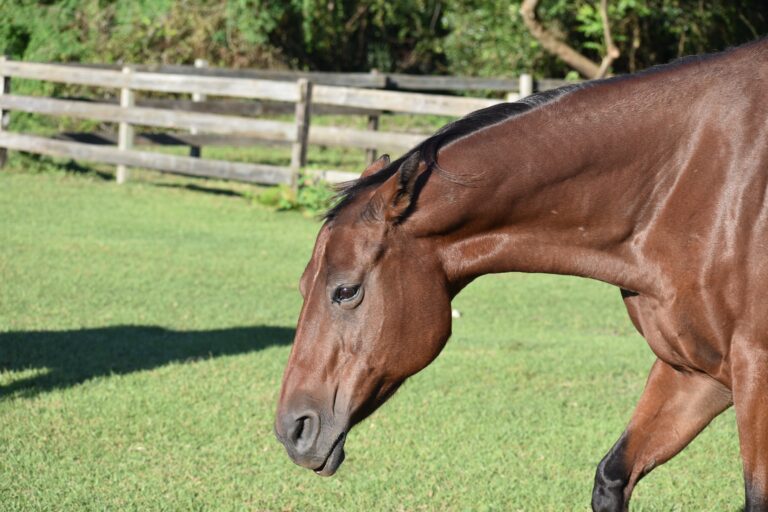
In this podcast, we focused on equine chiropractic as part of equine integrated sports medicine used by veterinarians. Our guest was Larkspur Carroll, DVM, who owns CORE Therapies LLC in Versailles, Kentucky. She is certified in acupuncture and chiropractic.
Carroll credits several mentors at The Ohio State and in private practice with opening her mind and veterinary practice to include acupuncture and chiropractic. “I had no personal experience with my own body with chiropractic,” she admitted. “I went into chiropractic as a skeptic. But, people don’t know what they don’t know! It opened my eyes and world to a whole new corridor.”
She said her acceptance of chiropractic veterinary medicine might stem from her early interest in art and architecture—both of which are spatially oriented. “I can see in #D, and horses speak with their movement,” she said. “When I started in chiropractic I learned degrees of sensitivity of sequential exams. When you are doing three horses a day six days of week palpating and hands-on, you understand how to feel the movement.”
Carroll started her career as a general practitioner. She gradually moved into providing only equine therapies. “I never regret my general practice because of being able to guide the patient,” she explained. “I might see a disease.” Carroll said she might get called in by a trainer for an adjustment “when actually it’s a neurologic deficit. Then I can refer the horse to where it can get the diagnostics it needs.”
She admitted that Kentucky is a place that warrants niches like hers in equine veterinary medicine. And she said this might not work in other locations.
Patients
While Carroll’s patients used to be about 85% racehorses at the track, she now focuses on other areas. Those include weanlings, yearlings, mares and stallions. “It’s rewarding to help these athletes,” she said.
Her clientele also includes event horses, hunter/jumpers, dressage horses, some polo ponies, Pony Club horses and backyard equines.
She advised that chiropractic is best used as a preventative tool. “I find patterns that lead to asymmetries before they become a problem.”
Explaining Equine Chiropractic
Carroll admitted that many veterinarians have issues with chiropractic terminology. “The verbiage is difficult,” she admitted.
A subluxation means something different to a veterinarian than a vertebral subluxation complex means to a chiropractor.
“Let’s think about a joint with normal range of motion,” Carroll explained. “it might be a ball within a sphere. It rolls around the sphere. But what happens if it falls into the northwest corner and fixates there. It’s not that it came out of the sphere. I want to reintroduce the full range of motion.
“Subluxation means that it’s not being used to the full range of motion,” she said
Editor’s note: Learn more about equine chiropractic with Carroll in this episode of the Disease Du Jour podcast.
About Dr. Carroll
Dr. Larkspur Carroll received her veterinary degree from The Ohio State University. She interned at Rood and Riddle in Lexington, Kentucky, then earned her acupuncture certification through Chi Institute of Chinese Medicine and is certified by the International Veterinary Chiropractic Association. She founded CORE Therapies LLC in 2008. Based in Versailles, Kentucky, CORE Therapies strives to meet the comprehensive Veterinary Chiropractic and Acupuncture needs of Central Kentucky. She also is certified through the University of Tennessee in Equine Rehabilitation.
Dr. Carroll’s mother was a racehorse trainer and a mixed animal practitioner, and “Larkspur” comes from her mother’s love of gardening. Dr. Carroll also might be familiar to those on the Thoroughbred circuit as an exercise rider and the daughter of the late Thoroughbred trainer Del Carroll. She grew up eventing with off-the-track Thoroughbreds.









